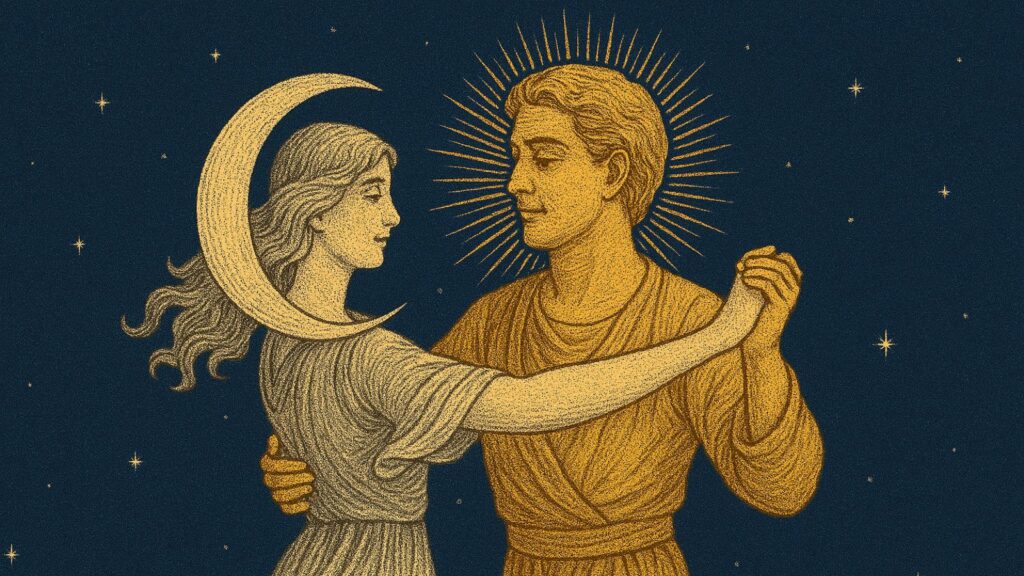The relationship between pain and pleasure in human sexuality is as profound as it is complex. Each time I have sex I am struck by the ecstatic release of deep pleasure which ignites an equal experience of intense pain. I have long wondered what begets what, if it is actually the intensity of the pain that arouses the pleasure or the other way around. I have come to believe that the pain/pleasure of the sexual act is one and the same. The tunnel of orgasmic faces at the Amora London exhibit bears out this connection in what the French have long called “le petit mort” or little death of orgasm. Orgasmic release exists in a place that is solely its own and I know I am not alone in identifying it as both pain and pleasure.
Love, sex, pain and violence all stimulate the release of similar chemicals and hormones in the human body. Endorphins that are released in painful experiences are often perceived as pleasurable. Stress and pain can also stimulate the serotonin and melatonin production in the brain which transforms painful experiences into pleasure. The release of epinephrine and nor epinephrine in pain can also cause a pleasurable 'rush'. Normal human biological response actually supports the complex and mysterious link between pain and pleasure.
So it is not surprising that the practice of combining painful techniques with sexuality is ancient. Roman poets, ancient tribal drawings and even the Kama Sutra all refer to safe practices of what has become known as BDSM. This acronym refers to Bondage, Domination, Sadism and Masochism, acts that reflect the ancient sexual rituals of sexual dominance and submission that have qualified sex throughout history. For more info see http://en.wikipedia.org/wiki/BDSM#Origins.
The medical analysis of this form of sexual behavior is as checkered as the practice itself. Never fully understanding the human urge towards giving and receiving pain in the context of sexuality, it has been thought of as both disease and mental illness through most of the development of psychiatric practice and even dating back to the early 1800’s. Although these kinds of sexual practices were taken out of the diagnostic mental health codes in the mid 1990’s, there are still many people who struggle with their own relationship to the urge to explore and experience pain with sex.
Sexual studies in both the US and Europe have estimated that the overall percentage of BDSM related sexual behavior in the general population ranges somewhere between 5 and 25 percent depending on sexual orientation, age and nationality of the study demographics. There is a significant subculture of BDSM practitioners throughout the world and clubs or “dungeons” are established in most large cities in the world. BDSM practitioners make an important distinction between their sexual choices and sexual abuse, as everyone involved must agree to be safe, sane and consensual. This includes the use of “Safe words” and other boundaries of consent and safety.
The connection of pain/pleasure has existed for most of recorded humanity and there are many people for whom this form of sexual behavior exclusively defines sexuality. Getting a glimpse of both the history and current nature of these sexual practices helps me understand the yin/yang of my own sexual response. Feeling like our sexual arousal mechanism and desires are normal is a big concern for most of us. In fact, it is usually the first question people will ask when they go to see a sex therapist. Finding a language to talk about your sexuality and desire is not always easy, but it is the first step to meeting your physical desires and creating the emotional intimacy that makes sex meaningful.
Much of the sexual language available feels awkward and inadequate because it is used and overused in everything from popular music to pornographic content that distance instead of approach my sexual experiences. Talking about my sexual fantasies and dreams is still amazingly challenging for me even after 25 years of marriage. It is weird to find myself for a loss of words about sexuality, especially my own, as I work daily at inventing a language for sexual experience that is safe and respectful. My ability to talk about sexuality in third person comes more naturally to me, but even as a teacher, my openness is seen as refreshing to some and exhibitionistic to others. I have witnessed this dramatic swing of being viewed as a prude at some Las Vegas adult shows after only weeks earlier, being referred to as the “sex girl” at a natural products show. Actually both of those descriptions are true about me- sexy as I would like to see myself, I know that I approach the vast continuum of human sexual behavior from a limited and narrow experience base.
Moving towards the conversations that make us uncomfortable is a bold and courageous act. The more I study and work to understand the lines between pain and pleasure as well as my own discomfort with giving a voice to fantasies, I notice that even the conversation about having the conversation opens things up. My husband and I are surprising ourselves with our new ability to share both past and present experiences and desires that we couldn’t speak about for years. In turn, this impacts our ability to try out new words and behaviors in our intimacy. Opening up and taking responsibility for our sexuality is a series of small steps that we take daily. There isn’t a “there” to get to, when it comes to building a healthy and vital sexual life, it is the process not the destination that makes it possible.
Diving into the discussions about sex are often simultaneously liberating and shaming. The many layers of unexplored, unnamed and misunderstood ideas and sexual experiences that live in us can easily cloud the best intended conversation. Taking responsibility for our sexual selves and building relationships that allow them to thrive isn’t always immediately rewarding. Sometimes taking the risks to explore uncharted sexual territory can be downright damaging to a relationship if both partners are not willing participants. Moving towards sexual exploration as a couple is a bit like taking a hike in the wilderness, don’t go unprepared. Do some research and benefit from the myriad of sexual teachers and writers that have a voice that speaks to both of you.
Moving into these kinds of conversations can shed a lot of light on how our sexual experience is mirrored in the emotions and soul of our relationship. Here’s my hypothesis: loving someone emotionally creates the same pain/pleasure experience that physically making love to them does. There are moments of deep connection and intimacy, vulnerability and nakedness. And with them comes an open door to the opposite experience: feeling deeply hurt by your lover, by what was said, or, just as often, what went unsaid.
The act of loving – in whatever form – requires a willingness to experience both the pain and pleasure. This is the piece of sustaining loving relationships that is easy to miss, or at least misunderstand, and tragically the place where we walk away from the heart of what we want most.
Images by ClevelandSGS, used under Creative Commons license.













